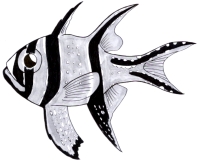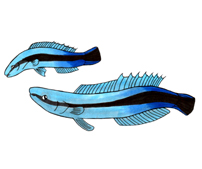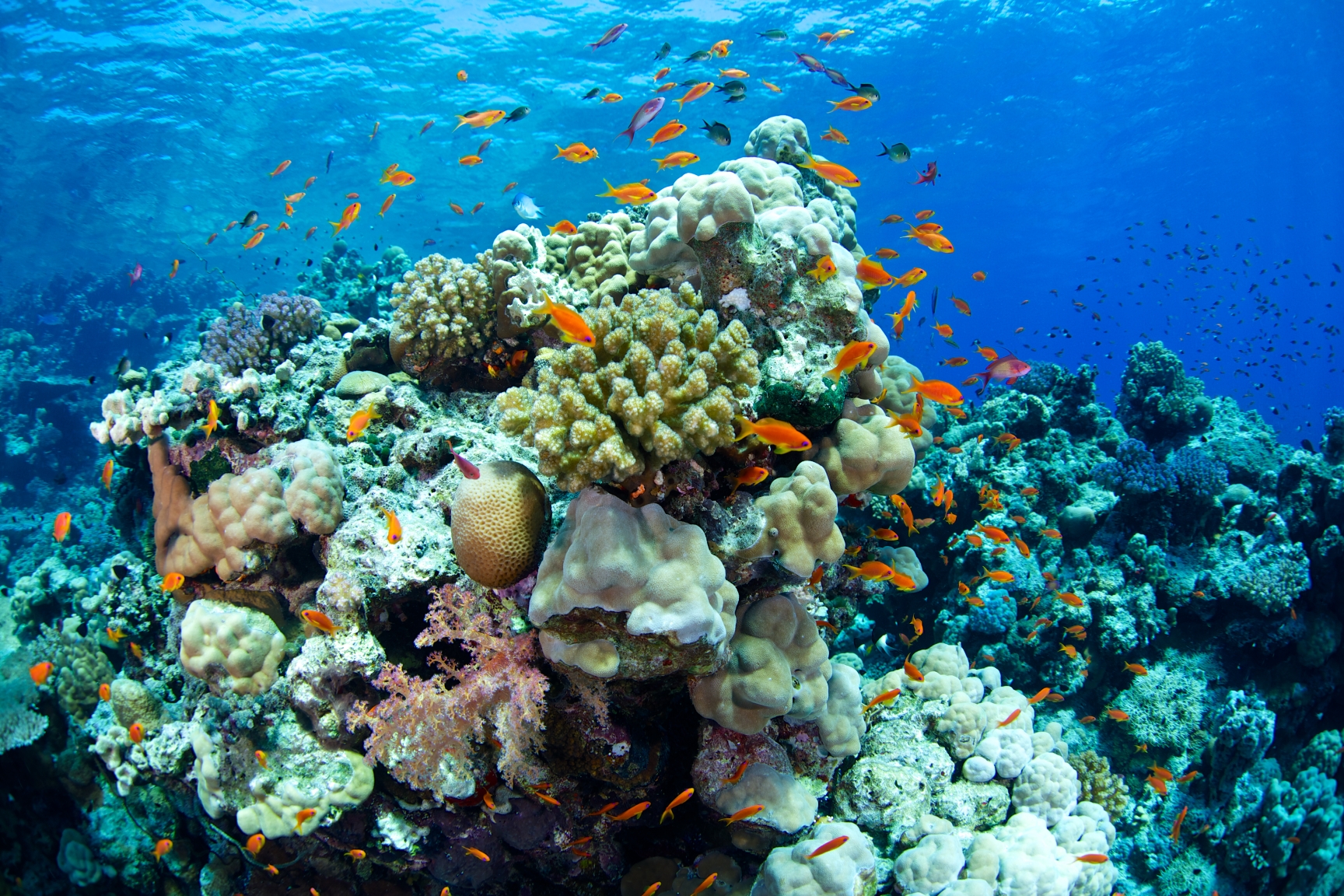Fish Files in your Backyard
Banggai Cardinalfish (Pterapogon kauderni)

Where do I live?
I can be found in marine environments but am also a popular aquarium fish. In the wild I am native to the Banggai Islands of Indonesia and also occur off Central Sulawesi within the Luwik harbor and North Sulawesi within the Lembeh Strait. I am found in shoals, coral reefs, and seagrass beds near shallow coastal waters and am often associated with sea urchins, sea anemones and branching corals which I use for protection from predators.
What do I look like?
I am easily recognized by my tasseled first dorsal fin, elongate anal and second dorsal fin rays, deeply forked caudal fin and striking colour pattern. I have a distinctive pattern of three black and white bars on my head and body and black edges with white spots on my fins.
What do I eat?
I like to feed on zooplankton and bottom dwelling crustaceans at night. I really like to eat copepods, which represent a bulk of my diet.
What is unique about me?
Males incubate the eggs inside of their mouths for about 4 to 5 weeks, during which they do not feed. This can separate males and females due to an enlarged oral cavity when brooding. During incubation males can be found with wide open mouths while shifting around their eggs masses for aeration.
How Common am I?
Studies have shown a significant decline in wild populations, including an extinction of a population off Limbo Island. Therefore, I am now classified as endangered due to collection for the aquarium trade and may be facing extinction.
Bluestreak Cleaner Wrasse (Labroides dimidiatus)

Where do I live?
I am widespread in marine environments and can be found in the Indian Ocean, Pacific Ocean, and Red Sea inhabiting coral reefs.
What do I look like?
I am an elongated slender fish with a pointed snout and am easily recognized by a dark lateral stripe along the length of my body. Males can be distinguished from females by their large size.
What do I eat?
I get all my nutrition through cleaning activities such as eating parasites, dead tissue, mucus and debris off larger fish.
What is unique about me?
Most schools of Bluestreak Cleaner Wrasse consist of 7-8 females and one male. If this male dies the strongest female changes its sex to become male which is known as sequential hermaphroditism, more specifically protogyny.
How Common am I?
I am the most widely distributed wrasse species and am not listed to be threatened or endangered.
